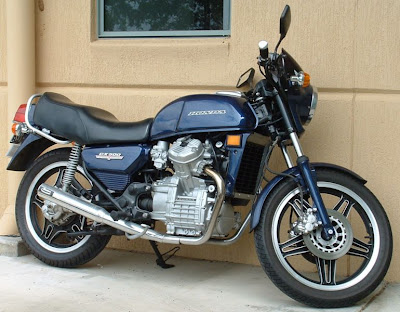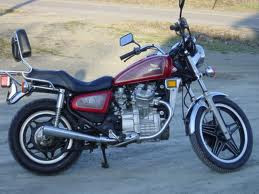What can you say about the CX500. In appearance it was in a way, sort of an ugly bike and very top heavy, but such innovative styling. The early ones were marred by top end failures, but any still around now should have been sorted. I think the best Honda CX500 models to buy were from 1982 onwards. It later grew into the CX650 which is probably the best one to have, but not such a classic motorcycle. Honda also produced a very fast CX turbo version of both.

The 1978 CX500 Standard had a large fuel tank, stepped seat, a round brake fluid reservoir and a plastic mini-fairing that was thought to look unusual at the time, and gave the bike the nickname "plastic maggot". Turn signals extend out through the mini fairing from the headlight's centerline. The CX500 Standard had silver Comstar wheels, 19 inch in front and 18 inch in the rear.
While V-twins were nothing new, Moto Guzzi had been mounting them "in line" with the frame with shaft drive for many years, this Honda was decidedly different. Not only was the 500 cc engine water cooled, but it had four valves per cylinder that were operated by pushrods rather than more conventional overhead cams.

The styling was radical, upright forks and a short engine contributed to a stubby wheelbase on a bike that was rather tall. The CX500 was one of the first recipients of Honda's new Comstar wheels (and later, on B models, reverse comstar and a square brake fluid reservoir), which measured 19 inches (480 mm) in front and 18 inches (460 mm) at the back.
 The fuel tank tapered toward the front and a huge half-moon tail light jutted out from a short fairing behind the radically stepped seat. The end result was a mix of standard, sport, and cruiser features.
The fuel tank tapered toward the front and a huge half-moon tail light jutted out from a short fairing behind the radically stepped seat. The end result was a mix of standard, sport, and cruiser features.The CX500 met with a good degree of success. It proved to be reliable and economical, being the least-expensive shaft-drive bike. Many examples still exist today, and along with the GL Silverwings, are fast becoming cult bikes. There are owners clubs throughout Europe and the rest of the world.